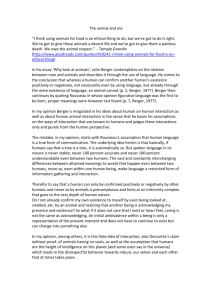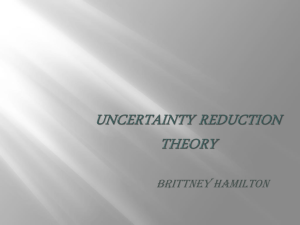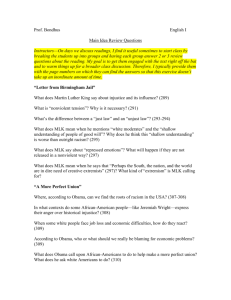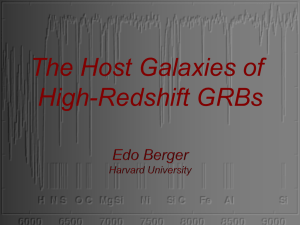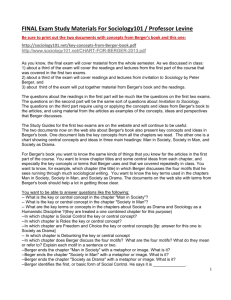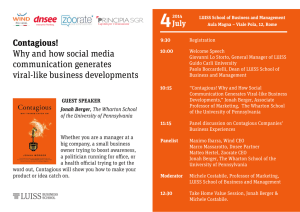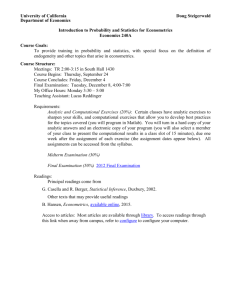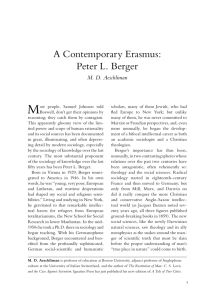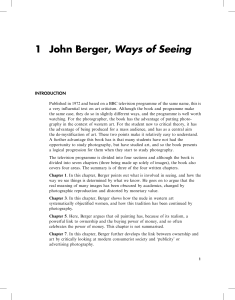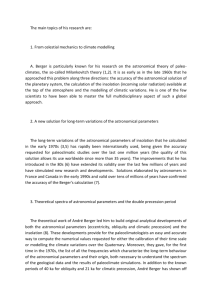Art, Content & Context - Robert Gordon University
advertisement
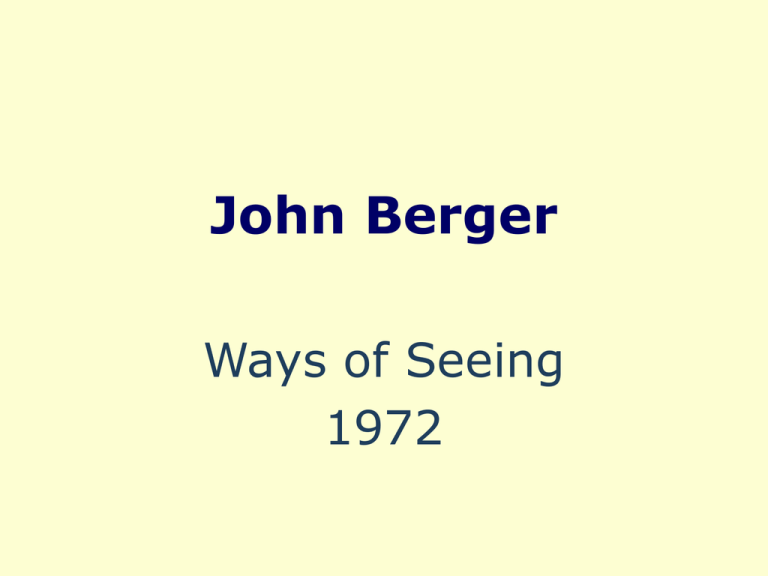
John Berger Ways of Seeing 1972 Printing from studioit http://www.studioit.org.uk • • • • • • • • • Printing lecture overheads Find lecture on studioit, under Stage 1 Right Click PPT. Do NOT choose Print Target Choose Save target as Save Powerpoint to your files or to the Desktop… Once file is saved, choose Open The file is now open in Powerpoint Find Print what: Choose Handouts Find Color/grayscale: Choose Black and White Find Slides per page: Choose number. Click OK Academic Reserve • Video, as per all texts on any Bibliography this semester, is on the Academic Reserve • Ask for the video at the Helpdesk at the entrance to the Library • Quote Title and Shelf Number: V2194 • Borrow headphones. • Watch on video player on 5th floor of Library ‘The relation between what we see and what we know is never settled’ John Berger. Ways of Seeing. 1972 John Berger. 1926 • Ways of Seeing. 1972. • BBC television series. 4 Programmes. • Critical response to Kenneth Clark’s television series: ‘Civilisation’. 1969. • Book published in same year; 1972. 4 essays / 3 visual essays. • Reading: final and 7th essay. John Berger: reading Berger, J. Ways of Seeing. London: British Broadcasting Corporation and Penquin Books Limited; 1972, pp132-35. Books On Berger: • Murray, C. Key Writers on Art: The Twentieth Century. London: Routledge; 2003, pp49-55. On concurrent criticism of consumer culture and mass media: • Raizman, D. Beyond High and Low Art: Revisiting the Critique of Mass Culture. In: Raizman, D. A history of modern design. Graphics and products since the industrial revolution. London: Laurence King Publishing Ltd; 2004, pp311-13. For a recent synopsis of the relationship between art, money and power, see: • Freeland, C. Money, markets, museums. In: Freeland, C. But is it art? Oxford: Oxford University Press; 2001, pp90-121 Other Website: • A website supporting a series of cultural events designed around the work of John Berger in 2005. It includes a biography, a bibliography and links to a series of newspaper articles and interviews with Berger. • http://www.johnberger.org/ Video • Ways of Seeing. 4. The Language of Advertising (videocassette). London: British Broadcasting Corporation; 2001. • (There are 4 videos in total, all worth viewing, but 2 in the collection are currently damaged. On re-order.) Berger’s Ways of Seeing • A turning point in the history and analysis of art • Introduces a political (Marxist, left wing) challenge to the traditional art historian. • Does not separate and privilege fine art from a wider analysis of visual culture • Critiques the elitism of the European oil painting, analysing it in relation to contemporary media and advertising • Mirrors concerns in the contemporary art world critiquing the connection between commercialism and the true purpose of art • Mirrors the concerns of previous and contemporary thinkers over the manipulative nature of mass media and consumer culture E. Panofsky (1892-1968) -The Iconographic Method • Primary – straightforward description. • Secondary – more specific. identification through specific details. • Intrinsic – introduces details of the wider artistic and historical context: • as belonging to a time, place and age, texts, documents, precedents, contemporary influences, the prevalent style of the artist etc. The crisis of art history “aesthetes and iconographers on the one hand tending the shrines of genius and antiquity, and revolutionaries on the other, bent on overturning the temples of art, mammon and patriarchy (Fernie, E. 1995) Thomas Gainsborough. Mr and Mrs Andrews. c1750 Kenneth Clark on Gainsborough in ‘Civilisation’ quoted in Ways of Seeing. P.106. ‘what he saw inspired him to put into his pictures backgrounds as sensitively observed as the corn-field in which are seated Mr and Mrs Andrews. This enchanted work is painted with such love and mastery….’ John Berger. Ways of Seeing. P.107 • ‘Why did Mr and Mrs Andrews commission a portrait of themselves with a recognisable landscape of their own land as background?’ • ‘They are not a couple in nature as Rousseau imagined nature. They are landowners and their proprietary attitude towards what surround them is visible in their stance and their expressions’ The New Art History • Contextual analyses from the social history of art concentrate on illuminating the wider cultural context. • The centre of gravity shifts from objects towards social context and issues of power. ‘Does the language of publicity have anything in common with that of oil painting?’ John Berger. Ways of Seeing. P134. ‘Ever since I was a student, I have been aware of the injustice, hypocrisy, cruelty, wastefulness and alienation of our bourgeois society as reflected and expressed in the field of art.’ J Berger. Permanent Red. 1979 ‘it is necessary to see works of art freed from all the mystique which is attached to them as property objects. It then becomes possible to see them ….in terms of action’ J Berger. 1966 http://www.robertsmithson.com/essays/sanford.htm Robert Smithson. Spiral Jetty. 1970. Utah. U.S.A. Theodore Adorno. 1903-69. ‘The culture industry’ created false needs to passify the consumer Vance Packard. The Hidden Persuaders. 1957 ‘What the probers are looking for, of course, are the whys of our behaviour, so that they can more effectively manipulate our habits and our choices in their favour….to probe why we are afraid of banks, why we love those big fat cars…’ V Packard. 1957 Ways of Seeing 4. The Language of Advertising
